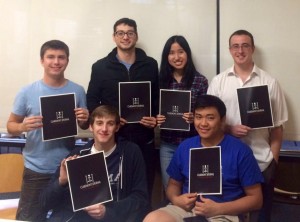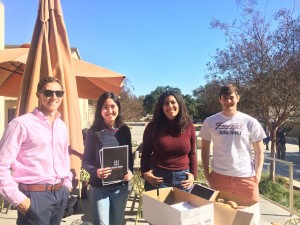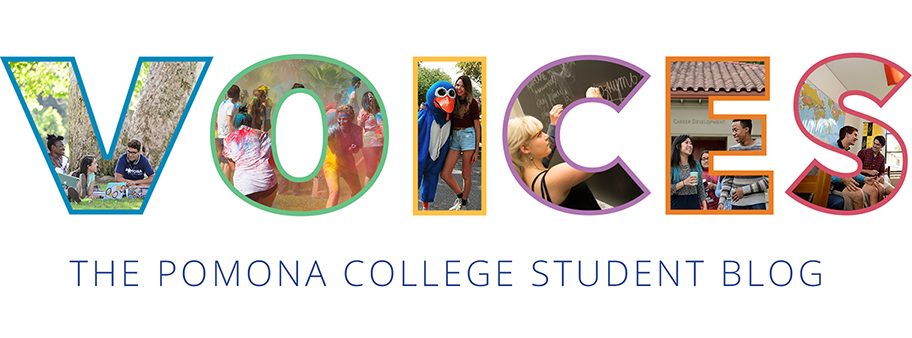I feel its weight in my hands. Its interesting texture. The unique scent. That feeling of flipping each page with pride and joy — each page that is equally thought-provoking, and each crystalizing memories of all of those precious moments that we have shared collectively, as we carefully pondered each detail, discussed our thoughts with each other, and made decisions that would define our ever-evolving identity and shape our future…
****
Like other stages in life, college is about growth. Surely, there are so many ways in which one could grow — intellectually, psychologically, emotionally…. Yet, even this scope of growth is defined too narrowly, I found. Growth is not just limited to us as individuals, but also applies to groups and student-run organizations.
As a relatively young student group on campus that published its first print issue in spring 2014, CJLPP is constantly growing. Like individual people, the student organisation is constantly discovering, defining, and reshaping its identity. Formerly known as Claremont Law Journal or “CLJ”, CJLPP added a public policy component to broaden the scope of topics covered. It has also shifted from exclusively accepting submissions from students from the five Claremont Colleges to receiving submissions from other undergraduate institutions across the country and, occasionally, from lawyers and scholars in related fields. Meanwhile, the journal has also organised law and public policy related events across campus (such as free LSAT workshops, lectures, and debates among political publications on campus) and encouraged staff writers to contribute shorter articles for the website on a more regular basis.

****
I got involved with the journal my first semester of freshman year as a staff writer. My focus was on the Hong Kong Basic Law and its implications on modern day “one country, two systems.” As a sophomore this year, I have served on the executive board as a senior editor (really enjoyed working with my writers on such topics as Asian American underrepresentation, California civil asset forfeiture, Shelby County v. Holder, Evenwel v. Abbot, and China’s stock market free fall), and more recently, chief operating officer. The experience of working alongside a group of dedicated people has been truly rewarding: despite the amount of work regular college classes and my other extracurricular engagements require, I have always enjoyed devoting a few hours of my spare time to the journal. I’m sure that others would concur.
During academically stressful periods, in particular, I see our weekly meetings as a special treat. Everyone can contribute to our editor-in-chief’s weekly agenda (all hail, democracy!), which covers not only the editorial side of the journal, but also includes items on potential law/public policy-related events we are planning, other ways to introduce topics in law and public policy to students of the five colleges, our evolving identity as an undergraduate journal, fun events for our staff members to bond as a big, happy family, etc.
Additionally, it feels great to see how other people — who are also college students striving to ace all of the apparently endless rounds of midterms, presentations, papers, and finals — still manage to conduct their own research on law and public policy topics that they are personally interested in. Some articles may be extensions to what our writers have started exploring as part of their classes or summer internships / research projects, while others are in completely uncharted territories — important issues worthy of reflection, new SCOTUS decisions, landmark cases in U.S., and world history that might be relevant to our society today…
****
Perhaps, one of my favourite experiences with the journal thus far has been the group editing and voting session towards the end of each semester. This is when the four senior editors and our editor-in-chief come together in a quiet conference room in the ITS (Information Technology Services) building at Pomona College: one that has many computers, a few chairs that, to a certain degree, resemble those on airplanes, and a whiteboard. By that time of the semester, we would have worked with the staff writers who we are paired with for weeks, and done our pre-group editing/voting session “homework”: a serious task where we read through all the submissions and write down our thoughts, comments, concerns, and recommendations.

In that ITS conference room, we discuss all of the submissions we have received one by one. While we sometimes reach a consensus relatively quickly, on other occasions, we would a brief debate as to 1) whether the piece should make it to our print edition, 2) if not, whether we should publish it online or reject the submission, and 3) if we have decided to publish the particular article in our print edition and / or the website, what kinds of substantive or structural changes are required.
Many submissions that we have received are of very high calibre – well argued, structured, evidenced, and written. Finalizing our decisions often proves to be difficult, and sometimes demands us to look beyond the quality of each piece and consider the scope of the topics — is there a range of articles that focus on law, public policy, and a mixture of both? How about local, state, national, vs. international topics? As an undergraduate journal based in Claremont, how much do we want to include submissions that come from professors, students, and professionals in law and public policy outside of the Claremont community in our print vs. online editions? Has our journal covered this topic in the past, and if so, is this new submission calling readers’ continued attention to the issue in a productive fashion? Should we have a coherent theme throughout the issue? While we do not have a fixed quota to preserve the flexibility that would most benefit this process, we have used these considerations as guidelines in some instances, stepping into our readers’ shoes to imagine what a good print issue might look like.
****
The release party was wonderful. As we handed members of the Claremont Colleges community the latest print edition of Claremont Journal of Law and Public Policy (CJLPP), we celebrated the fruition of another semester’s hard work.
The journal is the product of a dedicated group’s collaboration, a brainchild of many, and a story of growth in itself. It demonstrates that although American universities do not offer law degrees at the undergraduate level, students who are passionate about law and public policy can work together to create a publication that covers a range of fascinating topics. The process is intellectually fulfilling, challenging, and of course, simultaneously filled with tons of fun elements.
